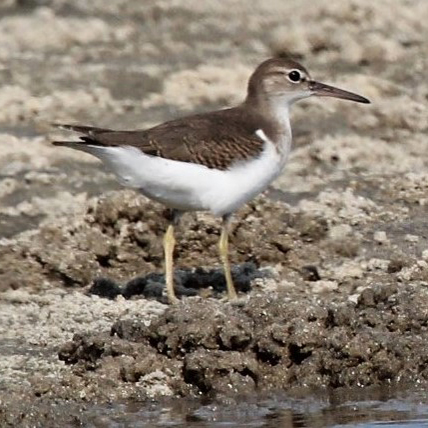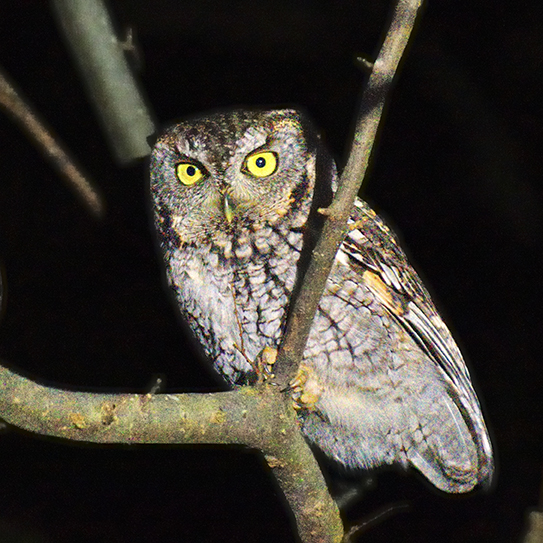CAPE CHARLES COASTAL HABITAT and NATURAL AREA PRESERVE
In Brief: Small preserve attractive to migrants in both spring and fall; worth a brief check of the boardwalk areas or a longer stint watching the bay at the boardwalk’s end, especially in autumn and winter, when jaeger and waterfowl shows can be significant.
Access: Day use year-round. No bathroom facilities on site, but public restrooms five minutes away in Cape Charles (at beach; in central park; and at public library). The trails begin at a small signposted parking area at the end of Patrick Henry Avenue (off Bayshore Lane).
Additional Info: Virginia DWR Birding Trail Site
Please visit the Virginia DCR website for more information regarding potential closures due to management activities: Cape Charles NAP
EVERYTHING YOU NEED TO KNOW ABOUT BIRDING the
CAPE CHARLES coastal habitat natural area preserve
The boardwalk at Cape Charles Natural Area Preserve.
This tiny (29-acre) parcel of land on the south side of Cape Charles harbor boasts a remarkable bird list of 250 species. The trails begin at a small signposted parking area at the end of Patrick Henry Avenue (off Bayshore Lane), with several boardwalks over freshwater ponds and one longer (mile-long) set of boardwalks that pass through maritime forest to an overlook at Chesapeake Bay. About half of the species detected from the preserve have been from this overlook, where multiple seawatch projects conducted in 2011-2012 and 2017 documented remarkable flights of waterfowl and seabirds, typically but not always on mornings with cold fronts. The lack of open fields and scrub-shrub habitat limits diversity of sparrows here, in contrast to Kiptopeke State Park and other larger parcels.
While adjacent parcels of (formerly very bird-rich) land have been developed for new roads and for housing, the Cape Charles preserve has managed to maintain its ecological integrity. Local and visiting birders check the preserve frequently, and many of the species noted farther south at Kiptopeke (see that account) have been found here. The willows and pines around the ponds are attractive to migrant species, especially Yellow Warblers and Blue-gray Gnatcatchers, rarely Black-billed Cuckoo or Willow Flycatcher. The surrounding edges and woods hold nesting Summer Tanagers, Red-headed (and other) Woodpeckers, Red-eyed Vireos, and Orchard Orioles. Check the pond for Northern Watersnake, Green Frog, and Bullfrog during warmer months; occasionally, a Green Heron or Little Blue Heron hunts here. Patches of Groundsel and other shrubby plants are attractive to Blue Grosbeak, Yellow-breasted Chat, and Indigo Bunting, all of which have bred here, and during late fall and winter to Orange-crowned Warbler.
Willet, Photo: Robert W. Schamerhorn
The longer boardwalk into the woods commences just a few dozen yards to the west of the ponds. Hackberry, Sweet Gum, and American Holly dominate the first part of the boardwalk, and as the terrain rises into the dunes, Loblolly Pines abound, with the final stretch occupied by Persimmon, Wax Myrtle, Sassafras, and Black Cherry. A raised platform with seating at the end of the boardwalk offers a premium view of Chesapeake Bay. The subtle changes in habitat along the boardwalk consistently attract migratory species drawn to specific plants or plant communities. The low swale with (often dry) creek attracts Northern Waterthrush; vine tangles and thickets where there are light gaps in the forest draw Blue-winged and Worm-eating Warblers; the last bit of deciduous woods near the bend in the boardwalk often holds Wood Thrush, Hooded Warbler, Acadian Flycatcher, American Redstart (scarce in spring), Ovenbird, Black-throated Blue Warbler, Magnolia Warbler, Rose-breasted Grosbeak, Scarlet Tanager, or Baltimore Oriole in springtime; Summer Tanager, Pine Warbler, and Blackburnian Warbler tend to stick to the pines; and warblers such as Prairie, Palm, Chestnut-sided, and Blackpoll seem to select the smaller trees just behind the dunes during migration. In the woodlands, watch for Fence Lizard and Eastern Hognose Snake in the sandy areas nearer the bay. Night birds include occasional Chuck-will’s-widow and rare Barred Owl. At the bay, Atlantic Bottlenose Dolphins pass this point daily, and even a breaching Humpback Whale was seen here!
Even as far north as this location, “reverse migration” of landbirds can be detected on morning after a cold front passage in September or October. Counts of 1250 Gray Catbirds, 650 Common Yellowthroats, and 360 Blackpoll Warblers, all flying northward, exemplify the potential for a “big” autumn morning at the preserve and on adjacent land. Normally after a cold front, birders position themselves farther south on the peninsula, where counts can be even higher, but for a “quick” morning’s birding before work or other obligations, the preserve is the perfect spot.
Rarities in spring include Swainson’s, Canada, and Kentucky Warblers and Mississippi Kites, in fall Cerulean Warbler and Western Tanager. From the bay overlook, the list of uncommon and rare waterbirds is longer: Red-necked and Eared Grebes, Pacific Loon, Brown Booby, Eurasian Wigeon, King and Common Eiders, Common Merganser, Parasitic, Long-tailed, and Pomarine Jaegers, Red-necked and Red Phalaropes, Razorbill, Dovekie, Cave Swallow, Common Redpoll, Snow Bunting. The 2017 fall season count from the beach produced a surprising 144 jaegers, mostly Parasitic but including one Long-tailed and 23 Pomarine Jaegers. The beach itself is currently closed to the public, as it holds one of the last few populations of the federally threatened Northeastern Beach Tiger Beetle. (At Picketts Harbor Natural Area Preserve to the south—currently not open to the public—Northern Goshawk, Black-legged Kittiwake, and Harlequin Duck have also been noted, along with rarer passerines like Townsend’s Warbler, Red Crossbill, and Evening Grosbeak.)




